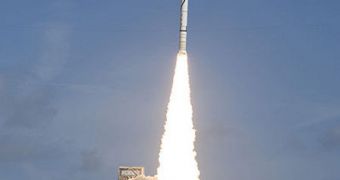According to sources at the White House, it would appear that the American space agency will not receive the $1-billion boost it and its contractors have been anticipating. The individuals who made these claims say that the proposal President Barack Obama will submit to the Congress on February 1 will contain no additional funding for an already-battered Project Constellation. However, the same sources confirmed that several billions of dollars would be included in the new funding package for developing partnerships with the private sector, for ferrying astronauts to the International Space Station after 2010.
If the February 1 document is indeed presented in the form insiders hinted at, then it's a distinct possibility that NASA will have to make a very complex and difficult set of decisions, mostly concerning the faith of its ARES I delivery system, and that of the Orion Crew Exploration Vehicle. Both of these Constellation components could be sacked, regardless of the amount of innovation, effort, time and money that have been placed in their development over the past few years. According to the same sources, the direction Obama is pushing for is very similar to the one laid out by the White House-appointed panel known as the Augustine commission, under the name Flexible Path.
The report did a lot of damage to the chances ARES I had of receiving further support. This stands to reason when understanding that the panel itself was led by a former CEO of Lockheed Martin, one of the government contractors in the world. Other members also included representatives from private space companies, which would have had all the interest in seeing ARES I scrapped. The companies that stood most to gain from the new NASA vehicle being retired included the Space Exploration Technologies Corporation (SpaceX) and Orbital Sciences Corporation. These two stand to gain millions from NASA contracts over the next five to ten years.
The panel was clearly not interested in keeping ARES I. This is evident in the fact that only two of their eight development Paths featured the light-lift delivery system. These particular two also featured no extension of the ISS, and said that the orbital lab would have to be deorbited by 2015. This poses the double trouble of putting the US at odds with international partners – which want to continue to use the ISS until at least 2020 – and also rendering ARES I a bit obsolete. If the ISS were to be retired in 2015, then this would take place two or three years before NASA can roll out its new rocket, Space reports.

 14 DAY TRIAL //
14 DAY TRIAL //